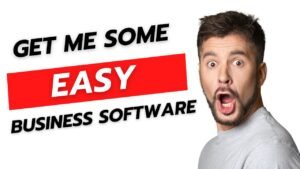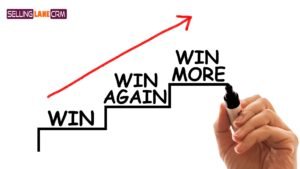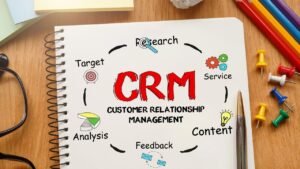Is Your CRM More Trouble Than a Toddler on a Sugar Rush? Time for The Easy CRM!

Hey there, fellow small business owners! We all know the drill. You’re out there hustling, hammering nails, fixing pipes, landscaping dream yards – the blue-collar lifeblood of keeping things running. But let’s face it, sometimes the tools we use outside the toolbox can feel more like a rusty old wrench than a smooth-operating power drill. That’s the struggle with not so Easy Business Software. There has to be a better way, there has to be an Easy CRM!

We’re talking about those CRM systems (Customer Relationship Management, fancy talk for keeping track of your clients) that look like they were designed by rocket scientists, project management tools with more buttons than a jumbo jet cockpit, and accounting software that makes deciphering a tax code look like child’s play. The truth is, complicated software slows you down, frustrates your team, and can even cost you money. Here’s why it’s time to ditch the digital headaches and embrace the world of Easy Business Software.
Imagine this: You just finished a stellar job for a client. You’re feeling good, the customer’s happy, and you head back to the office ready to fire off an invoice and schedule your next project. But then, you get hit with the software smackdown. Your clunky CRM takes forever to find the client’s information. The invoicing software requires you to be a math whiz to figure out tax rates. Frustration sets in, and what should be a quick task turns into a time-consuming headache.
Sound familiar? This is the reality for many small businesses wrestling with complex software. Here’s the deal:
- Easy Business Software Saves You Time: No more wrestling with manuals or spending hours figuring out how to use the darn thing. Easy software lets you focus on what you do best – running your business!
- Happy Employees Mean Happy Customers: (according to Harvard Business Review and every successful business owner ever) Imagine your team actually enjoying using the software. They’ll be more productive, efficient, and less likely to get discouraged by technical hurdles. A happy team equals better customer service, which keeps your clients happy too!
- Less is More: Think of your toolbox. You don’t need every fancy gadget under the sun, right? You need the right tools for the job, and Easy Business Software focuses on giving you the core functionalities you need, without all the bells and whistles you’ll never use.
- Boost Your Bottom Line: Less time spent battling software translates to more time spent bringing in new clients and completing projects. Plus, reduced errors from user confusion can save you money (think fixing mistakes in invoices or project timelines).
Easy CRM: Your New Secret Weapon
Let’s take a specific example: An Easy CRM. Think of it as your digital Rolodex on steroids. An Easy CRM lets you easily store all your client information, track project details, and send professional quotes and invoices – all with a clean interface and intuitive features. No more spreadsheets gone wild or sticky notes plastered everywhere. You can manage your client relationships efficiently, leaving you free to focus on delivering great service.
Finding the Right Fit: Easy Business Software for Blue-Collar Businesses
Not all “easy” software is created equal. Here are some key features to look for when choosing Easy Business Software that fits your blue-collar business needs:
- Mobile-Friendly: These days, your office might be the back of your truck or a job site. Easy Business Software that works seamlessly on your smartphone or tablet is a must.
- Simple Navigation: Think clear icons, easy-to-read menus, and intuitive workflows. You shouldn’t need a degree in computer science to figure it out.
- Minimalist Features: Focus on software that offers the essential tools you need, without overwhelming you with functionalities you’ll never use.
- Quick Setup and Training: Easy Business Software should be ready to roll out of the box. Look for options with minimal setup time and training resources (because let’s face it, you ain’t got time for that!).
“Investing in Easy Business Software such as Selling Lane is an Investment in Your Success”
– You after six months using Selling Lane
Think of Easy Business Software as an upgrade to your existing toolbox. It’s a tool that empowers you and your team, streamlines workflows, and frees you up to focus on what matters most – growing your business and delivering exceptional service. Remember, happy employees lead to happy customers, and that’s the recipe for long-term success in the blue-collar world. So ditch the software headaches and embrace the ease. Your future self (and your bank account) will thank you for it!




















